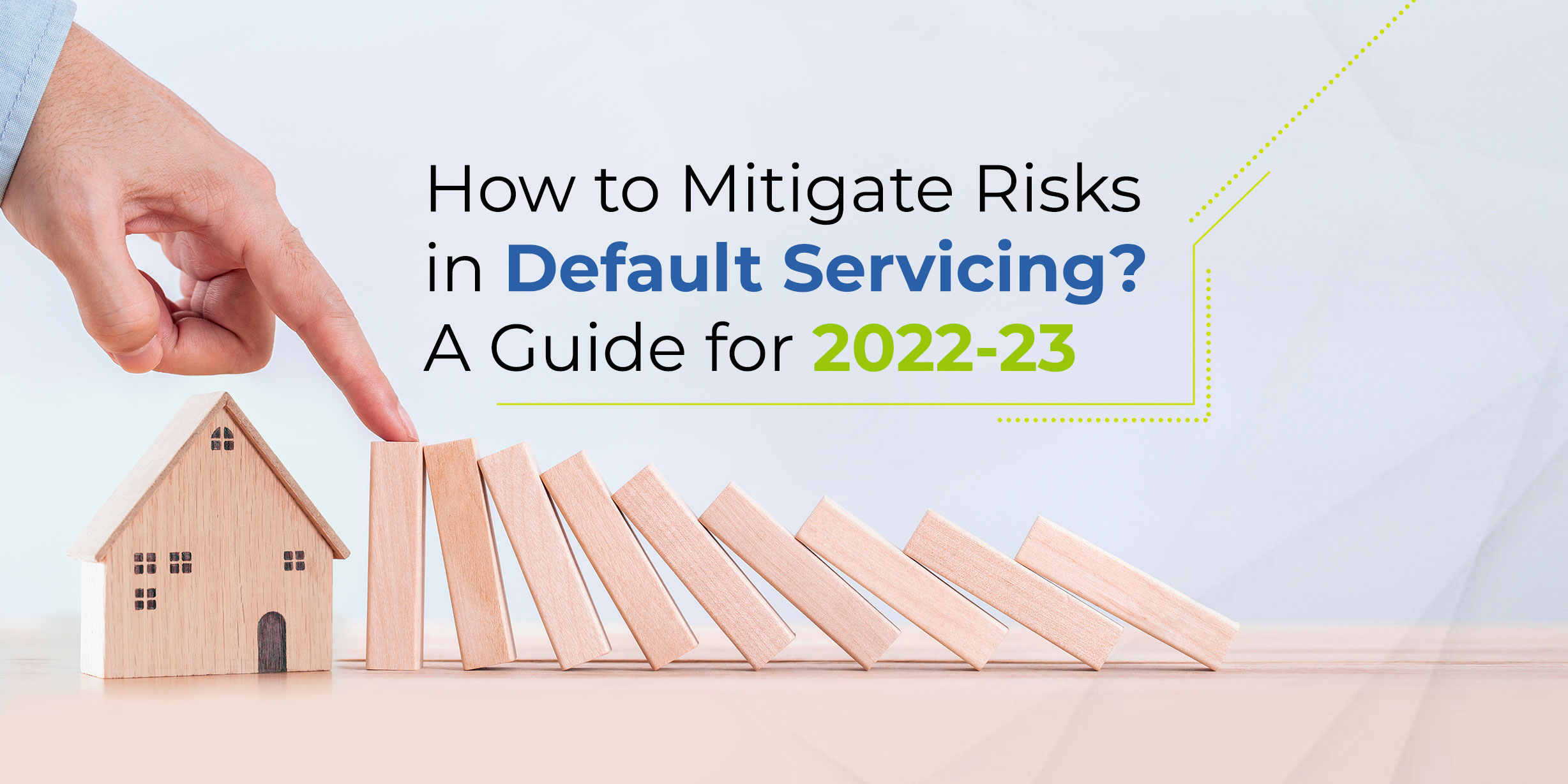The US mortgage industry is currently in a volatile state. On the one hand, first-time mortgage default rates are declining (0.34% in September), showing a degree of economic recovery after the pandemic. On the other hand, payments delayed for less than 90 days (technically yet to default) are slowly rising. Further, the statistics suggest that all may not be well – the default rate across leveraged loan types has been creeping up, almost tripling in 2022.
Amid the fears of a looming recession, mortgage providers must prepare and take proactive measures to mitigate risks in default servicing. This includes both predictive or anticipatory measures that can curtail risk-prone decisions, as well as agile measures that minimize risk from existing borrowers.
Read More: How Your Mortgage Business Can Respond to Market Volatility
What is the Nature of Risks in Default Mortgage Servicing Today?
Default risk can arise due to a variety of causes. The most common is borrower capacity, where the debtor’s poor financial health prevents them from making payments on time. This could be due to individual reasons or adverse economic conditions. Regulations and political factors are other common causes of risk in mortgage default management. For example, a forbearance law enacted due to political reasons, which then lapses, can increase the risk of defaults.
Default rates rose sharply in 2009, and then again in 2020 at the onset of the pandemic. Today, inflationary pressures add another dimension to mortgage default management, as rising prices have further shrunk borrowers’ capacity to spend. Yet, this is not an overarching trend, as the housing market remains healthy in certain segments and regions, with growing demand for high-value properties.
A good rule of thumb for default servicing companies, therefore, is to assess carefully, stay vigilant, communicate with empathy, and use data to make-in-the-moment decisions. This can help navigate risks in a dynamic market environment and also stay prepared for a possible recession without pulling back on business growth.
Read More: 5 Ways to Streamline Default Servicing
7 Ways to Mitigate Risks in Mortgage Default Servicing
While a degree of risk is inevitable, there are several steps mortgage providers and default servicing companies can take to protect themselves:
1. Preemptively increase interest rates
High-interest rates are an anticipatory way of filtering borrowers and choosing only those who would be able to fulfill payment obligations in the long term. Some providers may offer adjustable rate mortgages (ARMs) that modify interest rates at predetermined intervals based on financial health and other economic factors.
2. Streamline and automate borrower servicing communication
Streamlined communication channels can go a long way in controlling default mortgage servicing risks. It ensures that borrowers are always aware of when a payment is due and can prepare accordingly. Lenders can also anticipate forbearance conditions and provide timely relief so that the mortgage does not default.
3. Rigorously assess financial health and complete VVOE early
A thorough assessment right at the loan underwriting stage is one of the best ways to curb risks. Today, advanced cloud-based technologies are available that automate the origination process and check data to find red flags that may be overlooked by a human executive. Also, timely Verbal Verification of Employment (VVOE) prevents unexpected changes in borrower financial health from impacting the loan.
4. Adopt artificial intelligence (AI) for document management and audits
AI and machine learning (ML) play an important role in document management, both for default servicing as well as routine audits. AI can convert and process information in multiple formats to identify risk before it can occur. When a mortgage provider deals with high volume, such efficiencies are essential to make risk management more comprehensive.
5. Stay on top of regulatory and compliance needs
Understanding and incorporating the latest regulations in an agile manner can help minimize risk and handle delinquencies better. To achieve this, businesses can invest in a risk management platform that comes with built-in compliance and also value-adding features like workflow automation, data intelligence, etc.
6. Strengthen your data infrastructure
Using data, default servicing companies can move from reactive to proactive risk monitoring. A smart data fabric ingests a variety of risk information, including employment change, above or below-average spending, new loans (including those by non-banking organizations), changes in the household, etc. This will pinpoint the exact source of risk and streamline default servicing.
7. Invest in property preservation management
No matter how much you manage to curb and bring down risk, it is important to have a contingency plan. When payments do not get back on track, the lender may have to initiate a foreclosure – or at least a deed in lieu of foreclosure. As such, the property must be preserved in the best possible conditions so as to maximize profitability for the lender. To stay efficient, you may choose to outsource property preservation management.
Keep Risk Low and Margins High with Nexval
The mortgage industry is currently witnessing a volatile market with declining delinquency on the one hand and recession risk on the other. We have already been through a period of high default risk during 2020-2021, and the current economic conditions suggest that similar challenges may again appear. Fortunately, the latest mortgage technologies combine the power of data with cloud platforms and integrated workflows to provide intelligent, actionable solutions for risk mitigation.
At Nexval, our team of 1000+ SMEs is poised to help US mortgage businesses and delinquency servicing companies successfully navigate an uncertain future and take advantage of new opportunities. Speak with our Tech Gurus to learn how!



